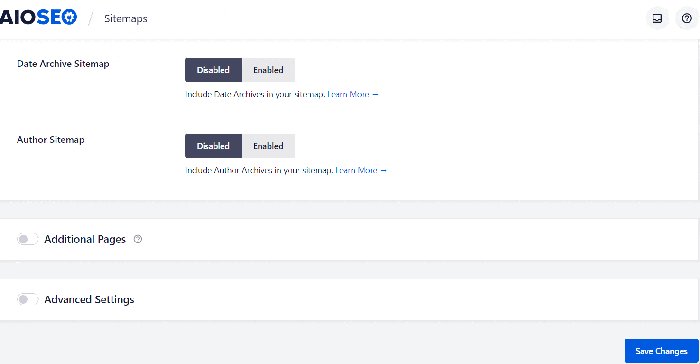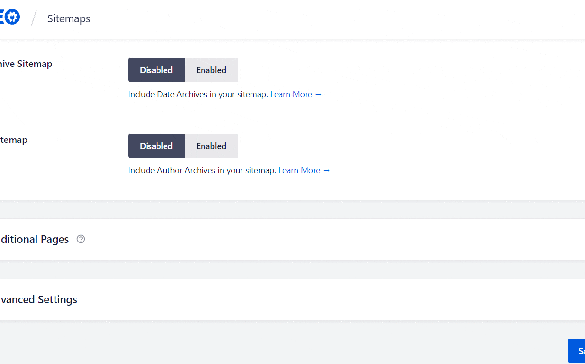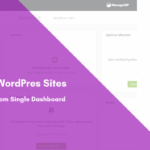How to easily create a multilingual sitemap in WordPress? This comprehensive guide will walk you through the process, from understanding the importance of multilingual sitemaps to implementing them effectively. We’ll cover everything from using user-friendly plugins to crafting detailed XML files manually, ensuring your site is accessible to a global audience while maximizing search engine visibility. Get ready to expand your website’s reach!
Creating multilingual sitemaps is crucial for and user experience. A well-structured sitemap helps search engines understand the content on your website, and aids users in navigating your multilingual site effectively. This guide will break down the steps, tools, and best practices for building and maintaining a multilingual sitemap for optimal performance.
Introduction to Multilingual Sitemaps in WordPress
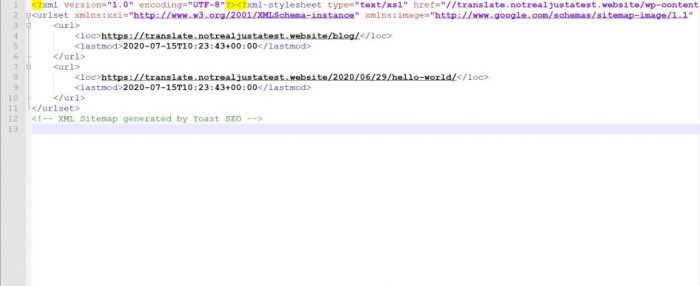
A multilingual website is crucial for reaching a global audience. A multilingual sitemap is a vital component of any such site, acting as a roadmap for both search engines and users. It directs them to different language versions of your content, ensuring optimal discoverability and usability.Multilingual sitemaps are structured in a way that allows search engines to easily understand the different language versions of your site’s pages.
This differs significantly from a standard sitemap, which primarily focuses on the structure of a single language version of the site. Properly implemented multilingual sitemaps are essential for optimizing a website for different linguistic markets.
Importance for Search Engine Optimization
Multilingual sitemaps are critical for search engine optimization () because they allow search engines to crawl and index different language versions of your website. This improves discoverability, which is particularly important for reaching a global audience. Without a proper multilingual sitemap, search engines might struggle to identify and index different language versions of your content, potentially leading to reduced visibility and lower rankings in search results for specific language queries.
Differences from Standard Sitemaps
Standard sitemaps provide a list of all the pages on your website, organized in a hierarchical structure. Multilingual sitemaps, on the other hand, explicitly identify different language versions of each page. This is essential for search engines to understand which content corresponds to which language, ensuring that the correct version of a page is shown in search results based on the user’s language preference.
This distinction is fundamental to effective multilingual . The structure of the sitemap file is key to ensuring proper language targeting.
Benefits for Users and Search Engines
Multilingual sitemaps offer several benefits for both users and search engines. For users, it enables easy navigation across different language versions of your content. For search engines, it allows accurate indexing of different language versions of the website’s content. Users can easily find the content they need in their preferred language, while search engines can accurately match search queries to the appropriate language versions, enhancing the user experience and improving search ranking.
Common Challenges in Creating Multilingual Sitemaps
Creating multilingual sitemaps can present several challenges. One common challenge is ensuring consistency in the structure and format of the different language versions of the sitemap. Another is maintaining accuracy in the translation of page URLs and descriptions. Additionally, keeping track of changes and updates to the multilingual content can be time-consuming.
WordPress Plugins for Multilingual Sitemaps: How To Easily Create A Multilingual Sitemap In WordPress
Creating multilingual sitemaps in WordPress is crucial for search engine optimization () and ensuring your content is accessible to a global audience. Plugins streamline this process, automating the creation and submission of sitemaps for different languages. This section dives into popular plugins, their features, and how they facilitate multilingual sitemap generation.Effective multilingual sitemaps enhance your website’s visibility in diverse search engine results, improving organic traffic and brand reach.
Different languages require distinct sitemap structures, and plugins provide tailored solutions to address these needs.
Popular Multilingual Sitemap Plugins
Several WordPress plugins excel at handling multilingual sitemap creation. These plugins often integrate with existing multilingual WordPress platforms, simplifying the process for users. Popular choices include Yoast , Rank Math , and others specializing in multilingual support.
Comparing Plugin Features
A comparison of plugin features highlights the distinctions and helps users choose the most suitable option. This analysis considers factors such as ease of use, pricing, and compatibility with various multilingual plugins.
| Plugin | Language Support | Ease of Use | Pricing | Pros | Cons |
|---|---|---|---|---|---|
| Yoast | Extensive, supports many popular plugins | User-friendly interface | Freemium, paid features | Excellent tools, strong community support | Can be complex for beginners |
| Rank Math | Good, with multilingual support options | Intuitive interface | Freemium, paid features | Comprehensive toolkit, versatile features | Potential learning curve for complex setups |
| WPML | Highly advanced, specifically for multilingual sites | Steeper learning curve | Paid | Robust multilingual capabilities, integrates seamlessly with other WPML tools | High cost, requires a certain level of technical expertise |
Plugin Setup Process
The setup process for generating multilingual sitemaps varies slightly between plugins. However, common steps involve activating the plugin, configuring language settings, and ensuring the plugin integrates with your existing multilingual platform (if applicable). Detailed instructions are usually provided within the plugin documentation.
Pros and Cons of Different Plugins
Yoast and Rank Math offer a good balance of features and ease of use for basic multilingual needs. WPML, while powerful, requires a higher level of technical knowledge and often involves a larger initial investment. The best plugin depends on your specific needs, technical expertise, and budget.
Example: Yoast Setup for Multilingual Sitemaps, How to easily create a multilingual sitemap in wordpress
Using Yoast for a multilingual site, you’d typically define the languages supported in the plugin’s settings. Next, ensure that the plugin correctly identifies and indexes content for each language. Proper configuration within the plugin’s multilingual settings is essential for generating accurate sitemaps for each language.
Creating Multilingual Sitemaps Manually in WordPress
Manually crafting multilingual sitemaps in WordPress offers a degree of customization that plugins sometimes lack. This approach allows for granular control over the structure and content of each language-specific sitemap, which can be beneficial for . Understanding the manual process empowers you to tailor the sitemap precisely to your website’s needs.Manually creating sitemaps requires meticulous attention to detail and a firm grasp of XML structure.
It’s a bit more technical than using a plugin, but the rewards include greater control over the indexing process.
Creating a multilingual sitemap in WordPress is surprisingly straightforward. You can easily use plugins to automatically generate different language versions of your sitemap, making it much easier for search engines to crawl and index your content. This is a great technique for international audiences. However, when you’re considering more sophisticated marketing automation tools, comparing platforms like Eloqua and Marketo comparing eloqua and marketo can be crucial for choosing the right one for your needs.
Regardless of your tool choice, having a clear and organized sitemap is key for effective SEO and user experience.
Understanding the XML Sitemap Structure
An XML sitemap is a structured file containing information about your website’s pages. This information helps search engines like Google understand the content and organization of your website, aiding them in indexing your pages more effectively. The structure typically involves URLs, last modification dates, and priority levels for each page. Understanding the basic structure is crucial for creating a functional sitemap.
Creating Separate XML Sitemaps for Each Language
To cater to multiple languages, you need to create separate XML sitemaps, one for each language. This approach ensures search engines can effectively index and categorize content for different language versions of your website. Each sitemap should contain URLs exclusively for the respective language.
Adding Language-Specific URLs to the Sitemap
Language-specific URLs are crucial for correctly targeting different language audiences. Each URL within the sitemap should explicitly indicate the language, for example, using a subdirectory structure or query parameters. For instance, if you have a French version of your website, the URL for that page should be clearly distinguished from the English version.
A Step-by-Step Procedure for Creating a Multilingual Sitemap Without Plugins
This method involves manually creating and uploading XML files. Each file will contain the specific URLs for a particular language.
- Identify your website’s language versions: Determine the different languages your website offers. This might be as straightforward as English and Spanish or could involve more complex scenarios like German, French, and Italian.
- Structure URLs for each language: Create a separate directory or use query parameters to differentiate language-specific URLs. Ensure each URL is unique to the language and accurately represents the content in that version. For example, if your English site is at example.com/en and the French version is at example.com/fr, the sitemaps will need to reflect those specific locations.
- Create an XML structure: Use a text editor to craft an XML file. The file should follow the standard XML sitemap format, encompassing the essential elements such as `
` tags to encompass each page URL. - Include language-specific URLs: Carefully add the URLs of your language-specific pages to the respective XML sitemaps. Include attributes like `lastmod` (last modification date) and `priority` to enhance the sitemap’s effectiveness. These attributes are important to signal the frequency of changes to search engines.
- Save and upload: Save each XML file with a name reflecting the language (e.g., `sitemap-en.xml`, `sitemap-es.xml`). Upload these files to the root directory of your website.
Manual Steps for Creating a Multilingual Sitemap
This table Artikels the manual process involved in creating a multilingual sitemap.
| Step | Action |
|---|---|
| 1 | Identify language versions |
| 2 | Structure URLs for each language |
| 3 | Create XML structure |
| 4 | Include language-specific URLs |
| 5 | Save and upload XML files |
Structuring Multilingual Sitemap Data
Creating a multilingual sitemap involves carefully organizing URLs for different language versions of your website. Proper structure ensures search engines can easily crawl and index all your content, regardless of the language. This section will guide you through the crucial aspects of structuring multilingual sitemap data.The key is to provide clear and consistent information to search engines about which language each URL belongs to.
This clarity allows search engines to present the correct language versions to users based on their preferences.
XML Tag Usage
Correct XML structure is essential for sitemap validity. The
Want to make your WordPress site accessible to a global audience? Creating a multilingual sitemap is easier than you think. By strategically organizing your content, you’re not only enhancing user experience but also improving your search engine rankings. This translates directly into how you can create value in b2b markets create value in b2b markets by providing clear and consistent information across different languages.
Ultimately, a well-structured multilingual sitemap is a cornerstone for success in today’s global marketplace, and it’s achievable with just a few simple steps.
Language-Specific URL Organization
For optimal organization, URLs for different language versions should be structured logically. A common approach is to include the language code (e.g., `/fr/` for French) as a subdirectory in the URL. This maintains a clear separation of content and allows users to easily navigate to the language they prefer.
- Example: A French version of a product page, typically located at
/fr/product-name, is associated with the English URL,/en/product-name. The `hreflang` tag in the sitemap should reflect this relationship. - Avoid using query parameters (e.g.,
?lang=fr) for language selection. While functional, query parameters are not as straightforward for search engines to interpret as using subdirectories. - Ensure consistency across your site. If you use `/fr/` for French, stick with it for all French content.
Sitemap Index Files
Handling multiple sitemaps, particularly for large multilingual sites, is managed using a sitemap index file. This file acts as a directory, listing all the individual sitemaps. This approach ensures search engines can efficiently discover all the language-specific content.
- The sitemap index file contains a list of `
` tags, each pointing to a specific sitemap file (e.g., `/en-sitemap.xml`, `/fr-sitemap.xml`). - This method is crucial for sites with a large volume of content in multiple languages, preventing one large sitemap from becoming unwieldy.
Example of a Well-Structured Multilingual Sitemap
This table demonstrates a well-structured multilingual sitemap fragment.
| URL | Language | Related English URL |
|---|---|---|
| /fr/accueil | French | /en/home |
| /fr/contact | French | /en/contact |
| /es/contacto | Spanish | /en/contact |
| /de/kontakt | German | /en/contact |
This example shows how to structure the data, mapping each language-specific URL to its corresponding English version. This is critical for effective sitemap handling by search engines.
Handling Different URL Structures for Languages
Multilingual websites often employ various URL structures to accommodate different languages. Understanding these structures is crucial for creating accurate and functional multilingual sitemaps. Properly mapping these URL variations is vital for search engine crawlers to effectively index and display content in the correct language to users.Different approaches to handling multilingual URLs can impact how search engines understand the content, leading to varying degrees of effectiveness in driving traffic and achieving desired results.
The ability to translate URL structures while maintaining site organization and searchability is a key aspect of a well-structured multilingual site.
Common URL Structures for Multilingual Websites
Different websites adopt various URL structures for multilingual content. Some common patterns include:
- Subdirectory Structure: This approach uses subdirectories to represent different languages. For example, a site with French content might have a URL structure like example.com/fr/page-name. This structure is relatively straightforward and often used for smaller-scale multilingual sites. This method is quite easy to understand and maintain, especially for sites with a limited number of languages.
- Subdomain Structure: In this approach, a separate subdomain is used for each language. For instance, fr.example.com might host French content. This method is popular for larger sites and those with a significant presence in multiple languages, as it offers better brand visibility and clarity in language identification.
- URL Parameters: A query parameter, typically appended to the URL, is used to specify the language. An example would be example.com/page-name?lang=fr. This method is often chosen for flexibility and scalability.
- Language Code in the URL Path: This structure integrates language codes directly into the URL path, such as example.com/en/page-name. This approach is often preferred for its clean structure and clarity in the URL, providing a visually straightforward way to specify language.
Adapting Sitemap Structure to Different URL Patterns
The sitemap structure needs to mirror the URL structure of the multilingual website. For example, if a site uses subdirectories, the sitemap should reflect those subdirectories. Each language-specific section of the sitemap should accurately represent the corresponding URLs.
Handling URL Variations for Different Languages
When URLs for different languages vary, ensure the sitemap accurately reflects these variations. For example, a product page might have URLs like example.com/en/product/123 and example.com/fr/produit/123. The sitemap must list both URLs, correctly identifying the language associated with each. Careful attention must be paid to variations in directory structure or parameter usage to ensure accuracy in the sitemap.
Ensuring Proper Handling of Different URL Formats in the Sitemap
Each sitemap entry needs to explicitly specify the language associated with the URL. This ensures search engines can properly index and categorize content. Consider using attributes like `xml:lang` or `hreflang` tags to provide further context. A consistent approach is crucial for clarity and searchability.
Procedure for Handling Various URL Formats for Each Language
- Identify all language-specific URL structures for your site. This includes subdirectories, subdomains, parameters, or any other unique pattern.
- Create a template for your sitemap entries, ensuring that language information is explicitly included. For example, include attributes like `xml:lang` or `hreflang` to mark the language of the page.
- Generate sitemap entries for each URL, mapping them to the corresponding language. Be meticulous in this step, especially when there are significant URL variations.
- Validate your sitemap using a sitemap validator tool. This helps to identify any errors or omissions that might affect its effectiveness.
Implementing Language Parameters in URLs
Incorporating language parameters into your WordPress site’s URLs is crucial for multilingual support. This approach allows search engines to easily identify the language of your content, leading to improved indexing and discoverability by users searching in different languages. This method also simplifies the management of different language versions of your website’s content.By embedding language codes within URLs, you’re essentially creating distinct pathways for different language versions of your site, which helps both users and search engines understand the content’s linguistic context.
This detailed explanation will demonstrate the practical implementation of language parameters within WordPress URLs.
Using Language Codes in URLs
Language codes are essential for specifying the language of a particular page or post. Commonly used codes, such as ‘en’ for English, ‘es’ for Spanish, ‘fr’ for French, etc., are standard and widely recognized. These codes are appended to the existing URL structure, making it easily understandable for both users and search engines. The inclusion of these codes improves the overall user experience and .
Different URL Structures for Different Languages
Different URL structures can be used to accommodate language parameters, each with its own advantages. One common approach is to append the language code to the end of the URL. For example, the English version of a page might be accessible at `www.example.com/blog/article`, while the Spanish version would be `www.example.com/es/blog/article`. This straightforward approach ensures clear identification of the language.
Another method is to place the language code in a subdirectory, for example, `www.example.com/en/blog/article` or `www.example.com/es/blog/article`. Both structures facilitate multilingual content organization.
Creating a multilingual sitemap in WordPress is surprisingly straightforward. Plugins like Weglot make it easy to generate XML sitemaps for different languages, ensuring search engines can properly index your content. However, thinking about the future of content, as Sarah Hartland discusses in her insightful piece on the future of content with Sarah Hartland beyond SEO and into demand , we need to go beyond basic SEO and focus on meeting user needs.
This focus on user demand will, in turn, greatly improve your multilingual sitemap’s effectiveness, making sure your content is discoverable in all the languages you support.
Using Language Parameters for Redirecting Users
Language parameters can be leveraged to redirect users to the appropriate language version of a page or post. For example, if a user visits a page in a language they don’t have access to, a redirection can automatically forward them to the correct language version. This ensures a seamless user experience and prevents frustration.
Reflecting Language Parameters in the Sitemap
The sitemap should reflect the language parameters embedded in your URLs. By including the language code within the sitemap URL, search engines can easily distinguish between different language versions of your content, enabling them to index and serve each version effectively. This step is critical for ensuring your site is easily discovered by users searching in different languages.
Testing and Validating Multilingual Sitemaps
Ensuring your multilingual sitemap is accurate and properly structured is crucial for search engine crawlers to effectively index your website’s content. Inaccurate or invalid sitemaps can hinder search engine visibility and negatively impact organic traffic. This section details the steps to thoroughly test and validate your multilingual sitemaps.Thorough testing and validation of your multilingual sitemaps are essential to ensure proper indexing and search engine visibility.
A well-structured and accurate sitemap allows search engines to understand the relationship between different language versions of your website’s content, improving discoverability and ranking for multilingual audiences.
Testing for Accuracy
A crucial step in the sitemap creation process is verifying the accuracy of the generated multilingual sitemap. This involves checking if all the URLs are present, if the language codes are correctly assigned, and if the URLs are accessible. Start by examining the sitemap for obvious errors. Manually review the URLs listed, ensuring that each corresponds to a valid page on your website.
Validating XML Structure
Validating the XML structure of your sitemap is critical for ensuring its readability by search engines. An invalid XML structure can prevent search engines from properly parsing the sitemap, leading to missed content. A valid XML structure ensures that the sitemap is properly formatted, following the XML specifications. This helps search engines easily process and interpret the data.
Using XML Sitemap Validation Tools
Several tools can assist in validating the XML structure of your sitemap. These tools check for syntax errors, missing elements, and other structural issues. A variety of free and paid online XML validators are available. These tools can help you identify and resolve errors in your sitemap’s XML structure. Examples include XML Sitemaps Validator, and other online XML validators available through various website platforms.
Checking for Missing or Incorrect URLs
To ensure that all relevant pages are included in your sitemap, systematically check for missing or incorrect URLs. Using a combination of manual and automated methods can identify any discrepancies. Begin by manually reviewing each language-specific sitemap, ensuring every important page is included. A helpful method is to cross-reference the sitemap URLs with the actual URLs of your website’s pages.
Summary of Validation Steps and Tools
| Validation Step | Description | Tools |
|---|---|---|
| Accuracy Check | Manual review of URLs for correctness and completeness. | Manual review, website navigation |
| XML Structure Validation | Ensuring the sitemap adheres to XML specifications. | XML Sitemaps Validator, Online XML validators |
| URL Completeness Check | Identifying missing or incorrect URLs in the sitemap. | Manual review, website navigation, automated tools (if available) |
Multilingual Sitemap Best Practices
Maintaining a multilingual sitemap requires careful planning and consistent updates to ensure accurate indexing and a seamless user experience. A well-maintained multilingual sitemap facilitates search engine crawlers in understanding your site’s content, improving visibility for users searching in different languages. This document Artikels best practices for keeping your multilingual sitemaps accurate and up-to-date.Effective multilingual sitemaps are crucial for websites targeting diverse audiences.
These maps help search engines effectively index and display content to users searching in their preferred language, leading to improved discoverability and user satisfaction. Incorporating best practices throughout the sitemap creation process is vital for achieving optimal results.
Maintaining Consistency in Language Support
Ensuring consistent language support across your website is fundamental for maintaining a coherent user experience. This involves maintaining a consistent language selection system and ensuring that all website elements, including menus, buttons, and content, are available in the supported languages. A consistent approach ensures that users browsing in a particular language will encounter relevant content in that language.
This is essential for user satisfaction and site usability.
Updating Multilingual Sitemaps
Regular updates are critical for keeping multilingual sitemaps accurate. Updates should be triggered whenever there’s a change in website content, such as new pages, modifications to existing pages, or removal of pages. Implementing automated processes for updating the sitemap based on content changes can save time and ensure accuracy. A system for tracking changes and automatically updating the sitemap is highly recommended.
Handling Language-Specific Content Changes
When language-specific content changes occur, the sitemap should be updated accordingly. Changes might include modifying page titles, descriptions, or adding new content. To manage these changes, consider using a system that identifies and updates the corresponding entries in the multilingual sitemap. A robust system will automatically detect updates to content and reflect those changes in the sitemap.
Key Considerations for Multilingual Sitemaps
A comprehensive list of key considerations will help in creating and managing effective multilingual sitemaps.
- Regular Audits: Regularly audit the multilingual sitemap to ensure accuracy and completeness. This includes verifying that all pages are listed in the appropriate language versions and that the sitemap reflects any recent changes. This process helps prevent outdated or inaccurate information from being presented to search engines.
- Content Localization: Content localization is vital. Ensure that all translated content is high-quality and accurate. This involves more than just translating words; it also includes adapting the content to the cultural context of the target language.
- Automated Updates: Implement automated processes for updating the sitemap whenever content changes occur. This ensures that the sitemap is always current and avoids manual errors.
- URL Structure: A well-structured URL scheme is essential for multilingual sites. Use consistent naming conventions for language-specific pages to maintain a clear structure for both users and search engines. This involves creating a logical and consistent structure for your URLs to make them easy to understand for users and search engines.
- Testing and Validation: Thoroughly test the multilingual sitemap to identify and fix any errors before publishing. Validating the sitemap’s structure and content for all supported languages will help avoid any technical issues that could impact user experience.
Wrap-Up
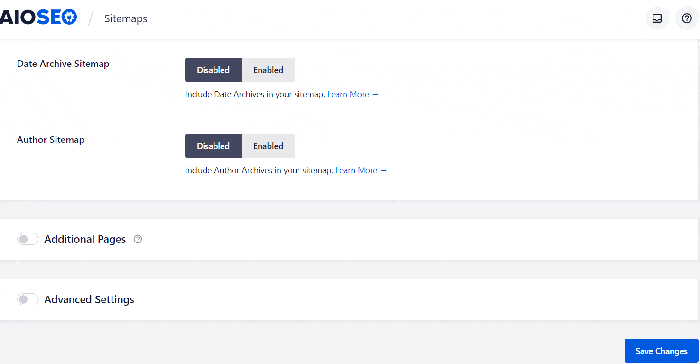
In conclusion, crafting a multilingual sitemap is a significant step in making your website accessible and discoverable to a wider audience. By mastering the various approaches—using plugins, manual creation, and effective data structuring—you can enhance your website’s global reach. This guide provided a thorough overview, equipping you with the knowledge to create, maintain, and validate multilingual sitemaps that support your global expansion efforts.
Now go forth and create multilingual sitemaps that empower your global audience!

